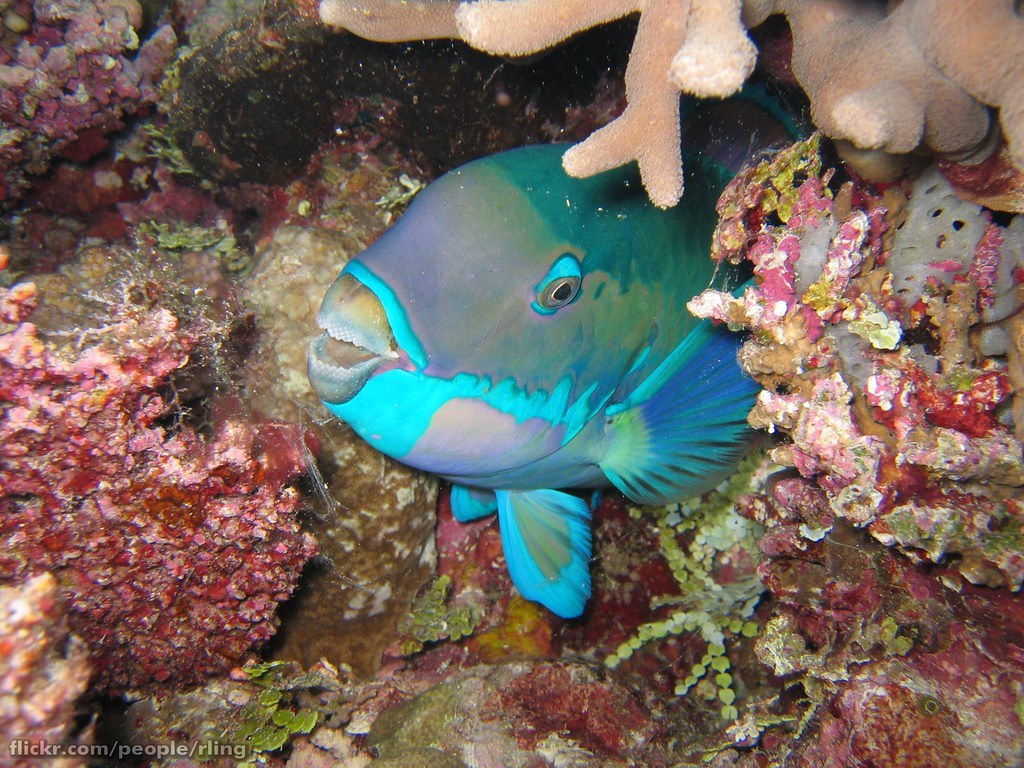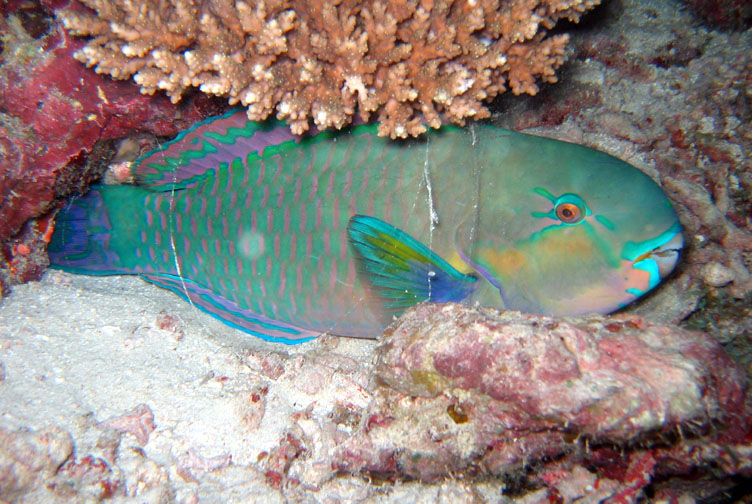5 Facts About the Fabulous Parrotfish
Meet one of our ocean's most showstopping fish

There’s a rainbow of life blossoming just beneath our ocean’s surface. From the vibrant reefs of the South Pacific to the dazzling shells nestled on Florida’s beaches, you don’t have to go far to realize just how captivatingly colorful and diverse our ocean truly is. Today, I’m here to introduce you to a group of fish that undoubtedly showcase some of the most fabulous creatures to swim in our seas today. Meet our ocean’s parrotfish!
Parrotfish belong to the family Scaridae and are a spectacular group of primarily herbivorous fish that thrive in lush coral reef habitats. There are currently about 80 parrotfish species known to science, with some reaching four feet in length as adults. At this point, you may be wondering what makes these critters so special. Jump on in and learn just five of the fascinating facts that make our ocean’s parrotfish so curiously captivating.
Their namesake comes from their bird-like beak that helps them eat their favorite food.

Parrotfish are named for their resemblance to their land-residing counterparts, thanks to their unmistakable beaks. They have these beaks so that they can easily chomp down on dead corals and rocks! They primarily eat the algae that cover hard structures on the reef, and their tough beaks are what enable them to eat these favorite snacks.
Behind the beaks of parrotfish, there are rows and rows of mind-blowingly strong teeth.
While a parrotfish’s teeth may not appear particularly hearty at first glance, they are some of the strongest chompers in the world. These teeth are made up of one of the strongest biominerals in the world: fluorapatite. They’re not only harder than silver or gold but can also withstand a lot of pressure—a pressure equivalent to the weight of more than 80 elephants, according to the Smithsonian. They’ve got a whole lot of those strong teeth, too. Every parrotfish has approximately 15 rows of 1,000 teeth fused together into a shape that forms the trademark beak they use to consume their favorite coral snacks. But I’d be remiss if I didn’t acknowledge another bizarrely incredible fact about the diets of these fish…
Their coral consumption ends up being excreted as sandy feces … and there’s a lot of it.
You didn’t expect these ravenous coral-chomping fish to have delicate little poops, did you? These animals eat so much coral on a daily basis that they also produce a very large amount of feces. When a parrotfish consumes a piece of coral or rock, it extracts the nutrients within the soft tissues, and all that remains during the elimination of waste (when they go to the bathroom) is sand. Ready for a truly wild statistic? Scientists estimate that a single large parrotfish has the ability to expel hundreds of pounds of sand a year, with some estimates even reaching 1,000 pounds. Parrotfish feces play an important role in the maintenance of healthy coral reef habitats, replenishing nutrients while simultaneously keeping algae growth in check.
Forget fluffy blankets. Parrotfish prefer mucus.
If you were a bit grossed out by the parrotfish poop facts, do I have another treat for you. Some parrotfish have a special relationship with mucus they secret from their gills, which they literally make a slimy cocoon out of to wrap themselves in at night. Don’t worry, though … these unusual pajamas do serve a purpose. Researchers note that the behavior is likely meant to serve as a protective mechanism, guarding them against parasites and hiding their scent from predators.
Parrotfish can swap sexes.
By now, you’ve probably noticed how striking a parrotfish’s appearance is. For some parrotfish, their colors change as they swap sex from female to male in a process called protogynous hermaphroditism. Parrotfish aren’t the only animal species in our ocean that do this. It occurs as an animal grows older and increases in size. What exactly does this have to do with their coloration, though? Every time a parrotfish changes sex, hormones trigger the color change resulting in a rainbow of unique individuals swimming around our ocean today.
Aren’t these creatures captivating? Above all, their presence in our seas helps remind me that the diversity of life within our ocean can truly leave us feeling speechless. Parrotfish and so many other species of marine life are counting on us to protect the vulnerable ecosystems they call home. Be sure to visit our Action Center to find out all the latest ways to protect our wonderfully diverse ocean and all the creatures that call it home.
